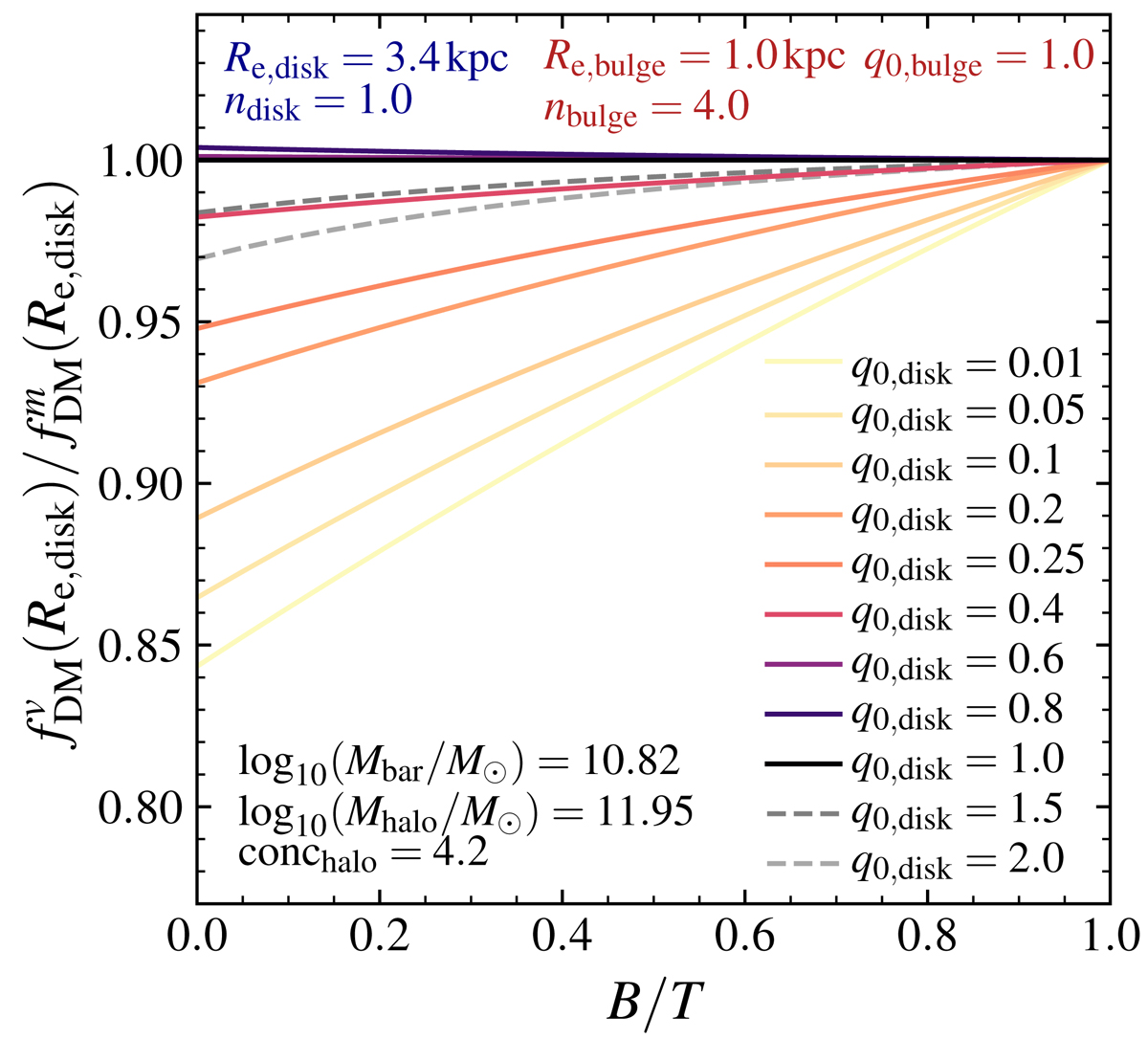Fig. 6.

Download original image
Ratio between the dark matter fraction at Re, disk calculated from the circular velocity and from the 3D spherical enclosed mass, ![]() , versus bulge-to-disk ratio B/T, for a range of different disk intrinsic axis ratios (colored lines, from q0, disk = 0.01 to 1) for an example massive galaxy at z = 2. The ratio between the two dark matter fraction measurements is lower for lower B/T (i.e., higher disk contributions) and lower q0, disk (i.e., more flattened disks), with
, versus bulge-to-disk ratio B/T, for a range of different disk intrinsic axis ratios (colored lines, from q0, disk = 0.01 to 1) for an example massive galaxy at z = 2. The ratio between the two dark matter fraction measurements is lower for lower B/T (i.e., higher disk contributions) and lower q0, disk (i.e., more flattened disks), with ![]() for low values of both q0, disk and B/T. The limiting case of a Freeman (infinitely thin) exponential disk has
for low values of both q0, disk and B/T. The limiting case of a Freeman (infinitely thin) exponential disk has ![]() . As B/T increases for fixed q0, disk, and likewise for increasing q0, disk at fixed B/T, the ratio of the two fraction measurements approaches 1 because the composite system becomes more spherical. Overall, the discrepancy between the fDM estimators measured at the same radius is relatively minor.
. As B/T increases for fixed q0, disk, and likewise for increasing q0, disk at fixed B/T, the ratio of the two fraction measurements approaches 1 because the composite system becomes more spherical. Overall, the discrepancy between the fDM estimators measured at the same radius is relatively minor.
Current usage metrics show cumulative count of Article Views (full-text article views including HTML views, PDF and ePub downloads, according to the available data) and Abstracts Views on Vision4Press platform.
Data correspond to usage on the plateform after 2015. The current usage metrics is available 48-96 hours after online publication and is updated daily on week days.
Initial download of the metrics may take a while.


